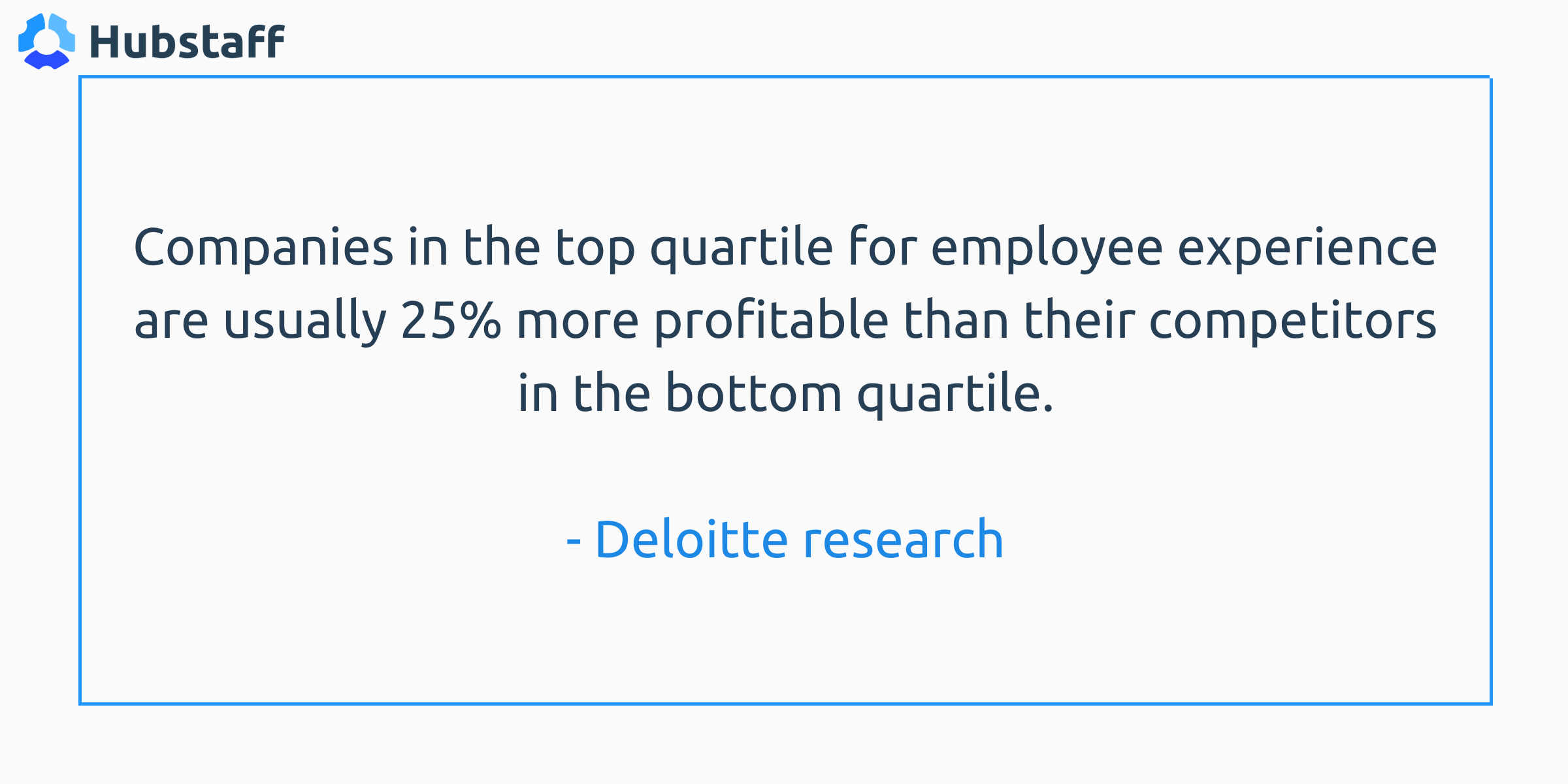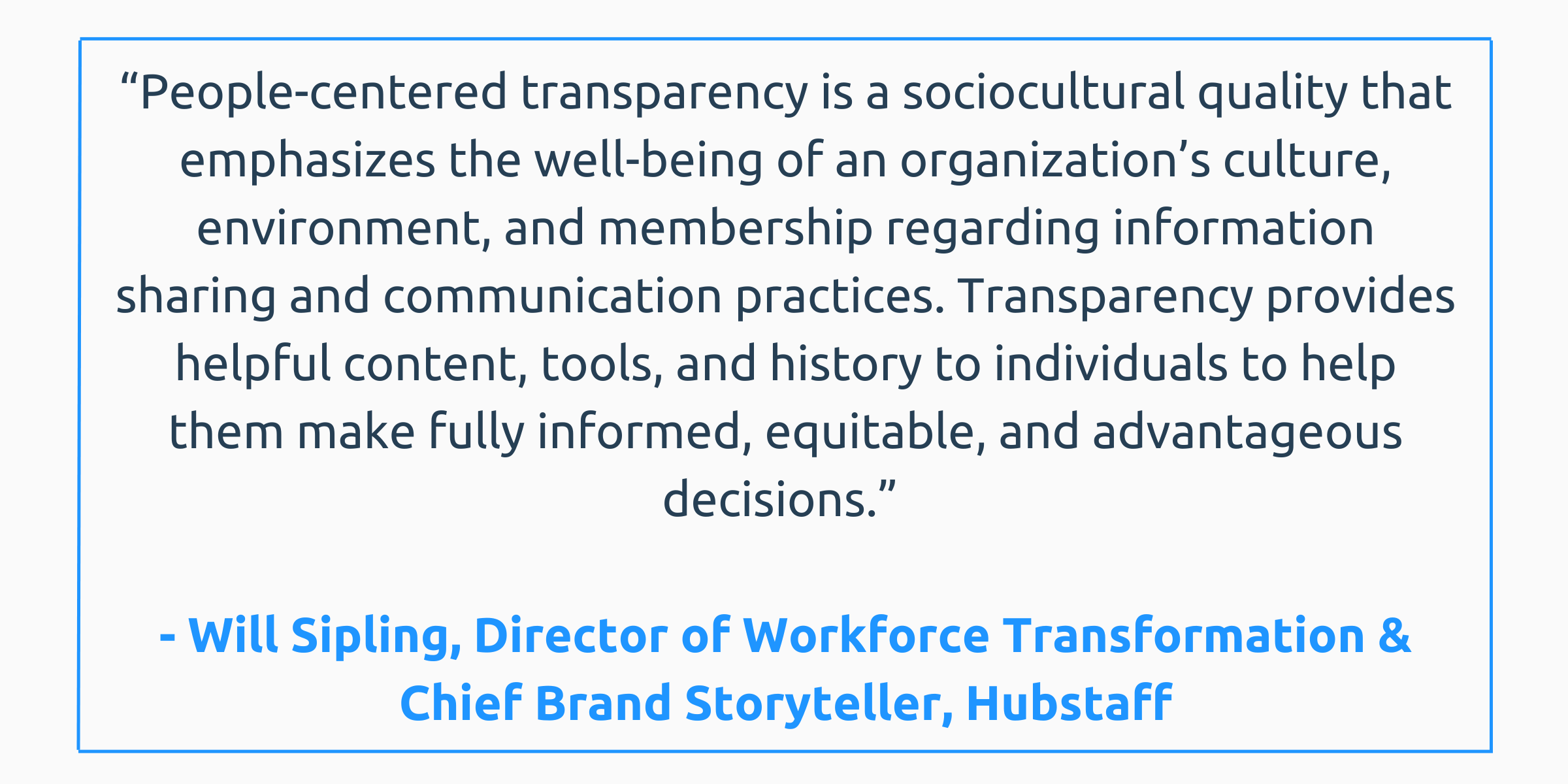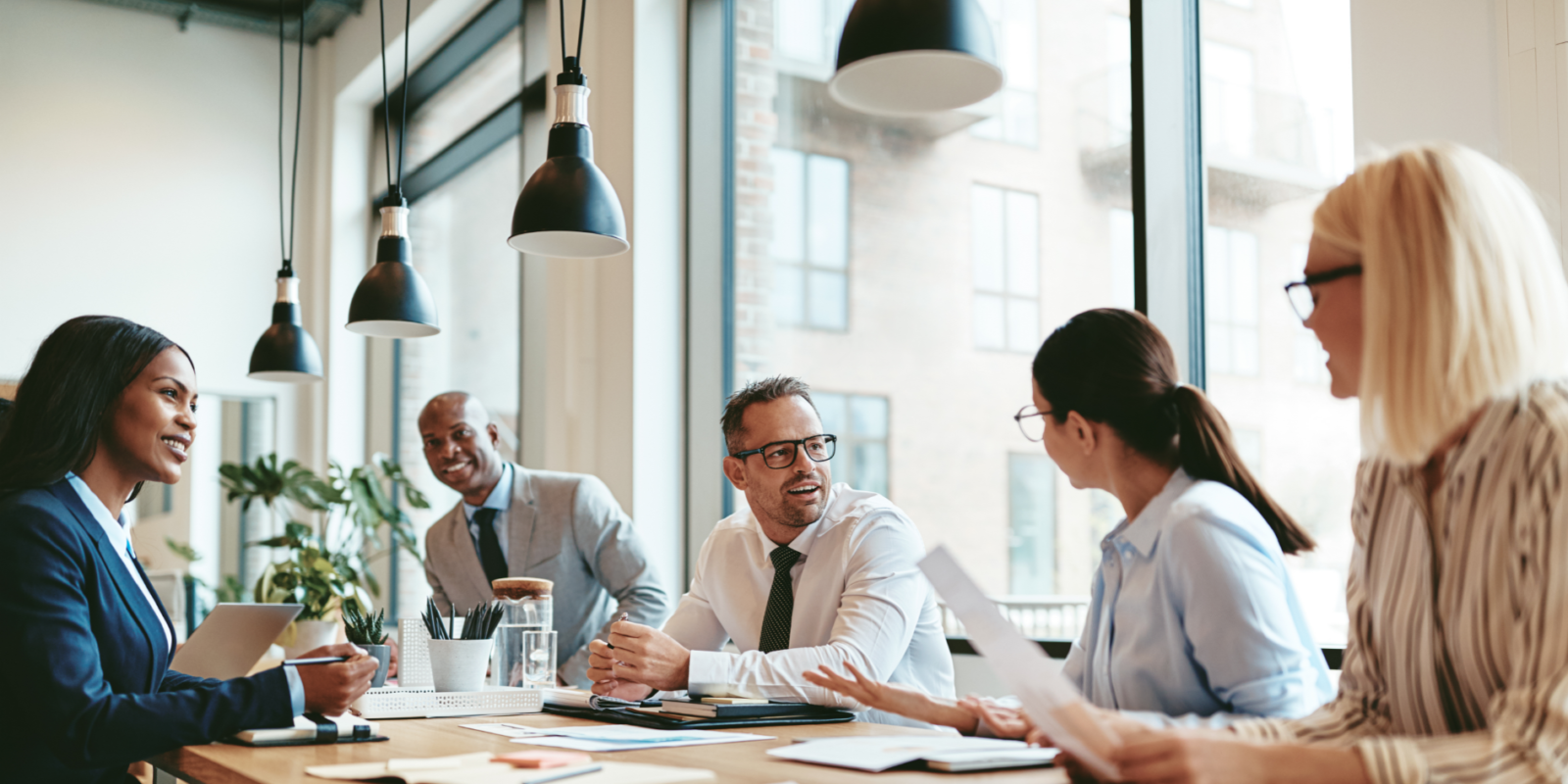It turns out your parents were right all along: honesty really is the best policy. When we set out to learn how leaders define transparency in business, we found honesty can be the lynchpin in company success.
Why does transparency matter? Transparency in business is the key to building internal and external relationships. Customers, employees, and shareholders want to be in the loop, and transparent practices can help create connections based on mutual trust and respect.
Transparency is the new normal: Gone are the days of painstakingly guarding “company secrets” and evading employees’ questions about profits. The new way of working is about sharing what makes you successful and using that to attract talent, increase profits, and build partnerships with other businesses.
How leading companies are modeling transparency: Businesses like Whole Foods and Atlassian exemplify how transparency can take you to the top. In this post, we’ll define transparency and give examples to help you implement transparent policies.
Boost your team’s efficiency with Hubstaff's productivity tools
How to define transparency in business
Transparency in business means being honest and forthcoming with employees, customers, and stakeholders. Transparent business leaders disclose knowledge and company information so their team and customers can make informed decisions and keep shareholders informed.
As the old saying goes, you have to give trust to get trust — that is the crux of business transparency.
Why should businesses aim for transparency?
It can be intimidating to think about revealing company information — and we don’t blame you if you’re thinking, “What’s in it for me?”
Businesses should prioritize transparency for all the moral reasons we like to pride ourselves on as human beings, but also because they benefit financially and socially from transparency. Here are some things that transparency is proven to do:
- Build your employee experience: In a study by Slack, 80% of employees said they want to learn more about how leaders make decisions in their organization. 87% want their future employers to be transparent.

- Boost profits: The Harvard Business Review found that high-trust companies are 2.5 times more likely to be high-performing revenue organizations than low-trust companies.
- Increase customer satisfaction: In 2016, Label Insight found that 94% of consumers prefer brands that practice transparency. That number has only increased in subsequent years, with 86% of Americans saying business transparency is more important than ever.
- Reduce employee turnover: According to SHRM, pay transparency decreases employee’s intention to quit by 30%.
Examples of transparency in business
Trust is a commodity in business that can lead to higher profits. It’s also an intangible thing that employees feel and reciprocate. How can businesses accomplish this elusive and sought-after goal of transparency? Let’s take a look at some examples from well-known companies:
Atlassian town halls: Atlassian hosts weekly half-hour all-hands meetings with their entire team. Then, the leadership ends the meeting with a Q&A so anyone can ask questions. This company-wide meeting helps them remain transparent and update their team on crucial information.
Whole Foods’s GMO disclosures: Whole Foods communicates transparently with customers about its GMO standards and is the first grocery store to require all the products it sells to be non-GMO. On top of that requirement, they expect transparency from their supplies, requiring all non-GMO labels in their store to be third-party verified or certified. This establishes customer trust and establishes transparent expectations for their suppliers.
Mailchimp Transparency reports: Since 2019, Mailchimp has published transparency reports to publicly share their method of responding to information requests. This information sharing, in addition to a plain language Privacy Policy, helps ensure that customers trust Mailchimp with their data.
Hubstaff ProfitWell earnings: At Hubstaff, we share our earnings company-wide using ProfitWell and openly discuss our failures and achievements on our blog. This helps us remain truthful with our team and customers and has also helped us partner with investors like WestView Capital.
These businesses embody the idea of transparency in many ways, demonstrating that there is more than one way to create a transparent work culture.
How we define and enable transparency at Hubstaff
At Hubstaff, we feel that transparency is crucial to building trust — and that it’s is a two-way street.
Our software gives leaders a glimpse into our work schedules, activity, the websites and apps we use, and how often we spend time on focus work vs. meetings. In turn, we’re free to create our own asynchronous schedules, decline meetings on Fridays, and see company performance in real time with ProfitWell.

At Hubstaff, work-life balance is one of our core values. You can break up your week however you like, but once you hit 40 hours, our hourly limits feature stops the timer automatically. This saves the company overtime costs and creates a culture where employees are never expected to work overtime.
Using the Insights add-on, employees can track productivity, time spent in meetings, and how they stack up with industry benchmarks. Managers know how much time their team spends on tasks without micromanaging and constant check-ins.

Start your transparency transformation
Building a transparent work culture doesn’t happen overnight, but the benefits of investing in honest communication are too critical to ignore. Luckily, you don’t have to navigate it alone. Hubstaff is time tracking and workforce management app that helps you maintain your culture whether in-person, remote, or hybrid.
Most popular
The Fundamentals of Employee Goal Setting
Employee goal setting is crucial for reaching broader business goals, but a lot of us struggle to know where to start. American...
Data-Driven Productivity with Hubstaff Insights: Webinar Recap
In our recent webinar, the product team provided a deep overview of the Hubstaff Insights add-on, a powerful productivity measurem...
The Critical Role of Employee Monitoring and Workplace Security
Why do we need employee monitoring and workplace security? Companies had to adapt fast when the world shifted to remote work...
15 Ways to Use AI in the Workforce
Whether through AI-powered project management, strategic planning, or simply automating simple admin work, we’ve seen a dramatic...




